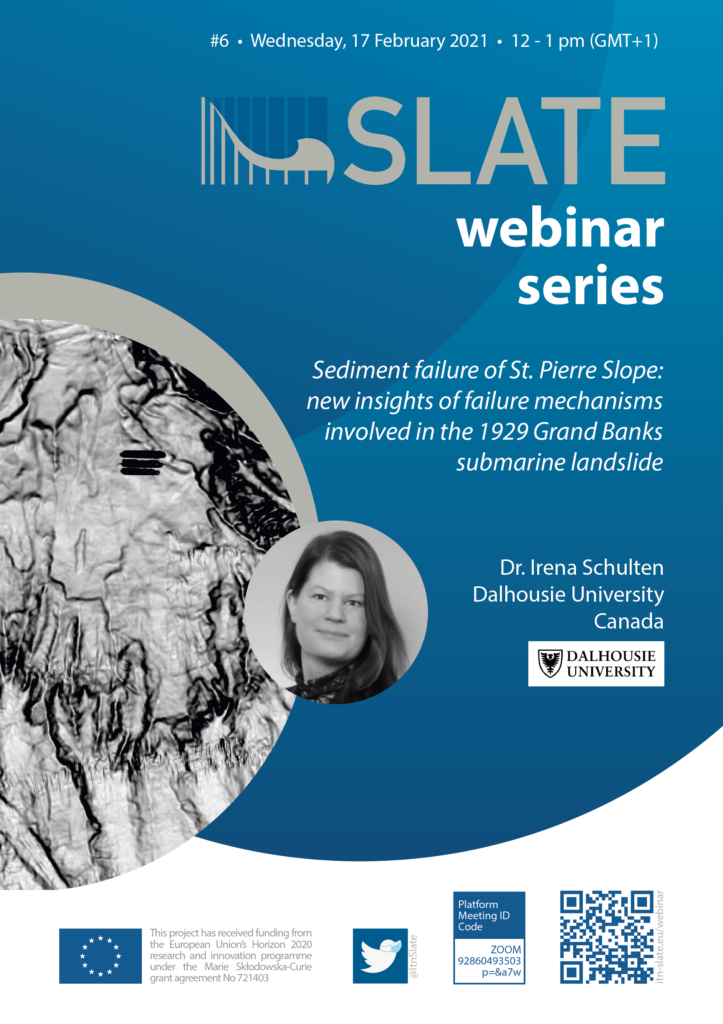
The 1929 Grand Banks submarine landslide on the southwestern Grand Banks of Newfoundland was triggered by a Mw 7.2 strike-slip earthquake. It is the first studied example of a submarine mass movement known to have caused a turbidity current and tsunami. The event caused 28 casualties and significant economic damage. The landslide has been identified as a widespread, retrogressive, shallow (upper 20 m) sediment failure in 730 m water depth (mwd). It is difficult to reconcile that this style of failure in deep water generated a large tsunami that had >13 m of run-up along the coast of Newfoundland. The objective of this study is to investigate other potential causal mechanisms and contributing factors involved in the 1929 event. The study focusses on St. Pierre Slope, the main failure area. A comprehensive analysis of multiscale 2D seismic reflection data, multibeam echosounder data and geomechanical testing indicated that sediment failure at St. Pierre Slope is more complex than previously suggested. Results show that the majority of surficial sediment failures occurred from ~25 m-high escarpments in >1700 mwd. The translational, possible retrogressive failures involved ~100 km³ of sediment material that either rapidly deposited on the slope (~60 km³) or became entrained into channelized turbidity currents (~40 km³). Numerous reflection offsets are present throughout the Quaternary section of the slope underneath modern seafloor escarpments (750-2300 mwd). These offsets extend down to ~550 m below seafloor (mbsf) and are interpreted as low angle (~17°), planar-normal faults of <100 m-high vertical and ~330 m of horizontal displacement. The faults are interpreted as part of a massive (560 km³) complex slump with evidence of multiple décollements (250, 400-550 mbsf) and slumping in at least two directions. It is interpreted that the 1929 earthquake triggered slumping of the 550 m-thick strata of sediment with seafloor displacement of up to 100 m in places. This instantaneous displacement of the slump in 750 mwd is a likely more efficient source for tsunami generation than the translational, shallow (<25 m) failures in deeper water. Slope stability analysis using peak ground acceleration (PGA) indicates that the 1929 earthquake, presence of geomechanical weak layers and possible displacement of the slump caused the surficial failures. These findings indicate that the 1929 submarine landslide involved two failure mechanisms: 1) a massive (560 km³), complex slump; and 2) widespread, surficial (<25 m) sediment failures. Both likely contributed to tsunami generation.
- Wednesday, 17 February 2021
- 12 pm – 1 pm (GMT+1)
- via ZOOM
- permanent Zoom Link
- ID: 928 6049 3503 Code: p=&a7w
Webinar Flyer:


